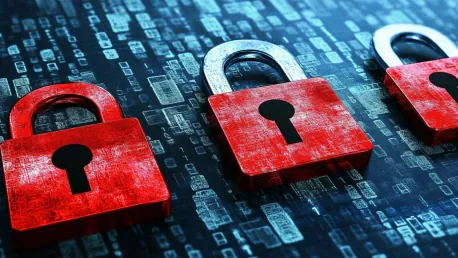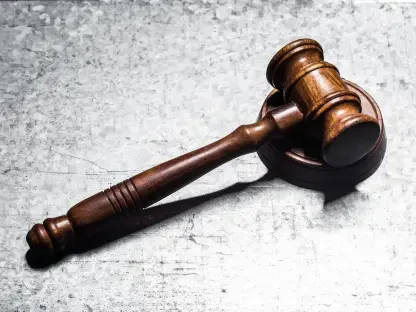Listen to the Article
A digitally-driven world hasn’t just brought benefits and perks to the business world—it has also created points of friction for you and your peers. What are most of them related to? The protection of personal privacy has grown into a glaring concern for governments, organizations, and individuals alike.
It’s nothing new that the reliance on technology has expanded exponentially, blurring the lines between virtual and physical reality. Today, it’s used for most daily activities and transactions. This has led to new opportunities for malicious people to collect, use, and abuse the personal data used by citizens.
Something had to change; and with that shift in mindset came significant changes in privacy law, with countries across the globe attempting to regulate and safeguard personal information.
That’s why this article is here—to walk you through the evolution of privacy law, examine major developments such as the General Protection Regulation (GDPR) and the California Consumer Privacy Act (CCPA), and outline the hurdles that come with the tech innovation that lies in Artificial Intelligence (AI), the Internet of Things (IoT), and blockchain. It’ll also offer you considerations into how various jurisdictions handle privacy laws, putting the spotlight on the European Union’s (EU) approaches compared to the United States and China. Last but not least, you’ll delve into the ongoing debate between national security concerns and the protection of individual privacy rights.
The Evolution of Privacy Law
Firstly, understanding the current privacy regulations and law sector must be done by turning your attention to the past; where such concerns first started. Privacy regulations, as we know them today, have only made accelerated progress over the past few decades—ever since the Internet has become a vital part of daily life.
While it hasn’t initially been a cause of concern, there has been a turning point; one related to the advent of digital technologies. Their scale and complexity in everything related to data collection made it necessary for lawmakers to shift the tides and introduce legal frameworks that would safeguard citizen privacy.
But before we move on, you need the answer to know: When did privacy become a pivotal point in all enterprises—including yours?
To get it, turn your attention to the introduction of the European Union’s General Data Protection Regulation (GDPR), which came into effect in May 2018. Its emergence was and continues to be a monumental event. It’s a set of complex rules designed to protect the personal data of EU members, imposing strict regulations on organizations that collect, process, or store personal information. Better said, the GDPR focuses on: the need to ensure that personal data is kept secure and used transparently, with clear consent from individuals. But that’s not where its role stops. It also grants these users the right to access, correct, or delete their data—thus introducing the concept of “data portability,” which empowers them to move information from one service provider to another.
Taking this into consideration, it’s certainly not a surprise then that the GDPR is still seen as the gold standard in the legal sector, delivering robust enforcement mechanisms and extraterritorial reach—which means that even enterprises outside the EU aren’t spared of its regulations if they operate with the region’s citizens.
What do we have on the other side of the world? The United States, who have developed their own unique set of privacy laws.
There’s the California Consumer Privacy Act (CCPA), which came into effect in January 2020 (and is currently the most significant state-level privacy law in the US and is frequently compared to the GDPR). Like the former, the CCPA gives consumers the right to know which personal data is being collected, the right to access it, and the right to request its deletion.
Here’s a difference, though; the CCPA is considered less comprehensive than the GDPR. That’s because it lacks provisions on data portability and does not require organizations to obtain explicit consent before collecting data.
Where does China stand in this painfully complicated regulatory landscape? Thankfully, they’ve also taken some significant steps for privacy protection—starting with the Personal Information Protection Law (PIPL), which came into effect in 2021. And while in practice it works well and maintains considerable control over data, the PIPL also contradicts some state surveillance policies—and is limited in comparison to laws in the EU.
The Challenge of Protecting Personal Data—and How Technological Advancements Are Changing the Game
With the rapid development of technology already established as a significant hurdle in maintaining proper compliance with regulatory expectations, it’s time to move on to how exactly innovation is changing privacy standards.
Artificial Intelligence (AI): More than anything else, AI has the biggest potential to revolutionize privacy protections. Unfortunately, it also raises some serious concerns. With AI systems relying on vast amounts of data to train algorithms, there comes the question of how personal the information used within LLMs is. Machine learning can predict individual behavior, preferences, and even emotions—based on a strong digital footprint. This data can then be exploited for purposes such as personalized advertising and predictive policing. However, it’s often done without the explicit consent of the individuals involved. The challenges come from learning how to balance the benefits of AI with the need to protect personal data from misuse.
Internet of Things (IoT): The IoT brings more issues to the topic of privacy law. That’s because IoT devices (which range from smart home appliances and wearables to connected, smarter vehicles) constantly collect data about users’ habits, preferences, and locations. On the brighter side, these can enhance service experiences—but they’re also bringing forth the risk of misuse. Adding to this vulnerability, citizens are also not fully aware of what exactly is collected and when. With the sheer volume and variety, IoT devices make it difficult to maintain transparency. Even more concerning, many of these technologies aren’t built with strong security protections, which can lead the way to breaches, hacking, and unauthorized access.
Blockchain: Blockchain technology might be mainly associated with cryptocurrencies like Bitcoin, but its use cases don’t stop there. And like any other field of the financial sector, questions are being raised about privacy. While blockchain is praised for its ability to create transparent and immutable records of transactions, it’s also fundamentally incompatible with traditional privacy principles. In simpler words, the data is stored in a decentralized ledger that is accessible to all participants and, as expected, might compromise the confidentiality of personal information.
The Debate: A Dilemma Between National Security and Individual Privacy Rights
With all the focus directed toward how companies can avoid risking the privacy of their users and customers, a good deal of neglect the most important layer of friction: the need to maintain a balance between national security and individual rights.
It’s easy for the matter of security to slip out of mind. But governments argue that surveillance and data collection are, in fact, necessary. While some might argue that the practice is unethical, many others understand its importance in preventing threats such as terrorism, cyberattacks, and organized crime.
Following the September 11 attacks, the US government implemented a range of surveillance programs built to detect and prevent terrorism. Initially, they’ve been heavily criticized for overreach and for infringing on individual privacy rights—but they’ve proved essential in preventing tragedy. Similarly, in the EU, there have been concerns that the GDPR and other privacy regulations might hurt future efforts in combatting terrorism and other security threats.
It’s clear that moving forward, there will be ongoing dialogue and cooperation between governments, businesses, and the civil society to deliver effective privacy protections that and dedicated to national security.
In Closing
All industry experts agree on one common truth: Technology will continue to evolve and, with it, privacy laws will also become more complicated to navigate.
Between the emergence of AI, IoT, and blockchain, paired with the threats of surveillance, data breaches, and cybercrime, existing legal frameworks will have to continuously adapt. Privacy laws such as the GDPR, CCPA, and PIPL are today’s most important steps in the right direction. But they’re hindered by the constant, ongoing dilemma that focuses on the balance between privacy and national security. Industry professionals must continue to keep their attention focused on these issues and prepare for a future of global cooperation and a shared commitment to protecting privacy.









